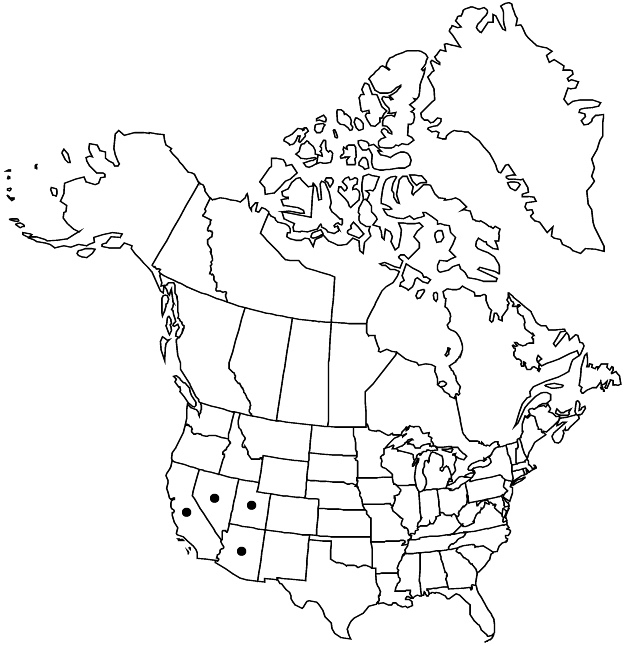Difference between revisions of "Eriogonum nummulare"
Contr. W. Bot. 11: 13. 1903.
FNA>Volume Importer |
FNA>Volume Importer |
||
| Line 12: | Line 12: | ||
|name=Eriogonum dudleyanum | |name=Eriogonum dudleyanum | ||
|authority=S. Stokes | |authority=S. Stokes | ||
| − | }}{{Treatment/ID/Synonym | + | }} {{Treatment/ID/Synonym |
|name=Eriogonum kearneyi | |name=Eriogonum kearneyi | ||
|authority=Tidestrom | |authority=Tidestrom | ||
| − | }}{{Treatment/ID/Synonym | + | }} {{Treatment/ID/Synonym |
|name=Eriogonum kearneyi var. monoense | |name=Eriogonum kearneyi var. monoense | ||
|authority=(S. Stokes) Reveal | |authority=(S. Stokes) Reveal | ||
| − | }}{{Treatment/ID/Synonym | + | }} {{Treatment/ID/Synonym |
|name=Eriogonum kearneyi subsp. monoense | |name=Eriogonum kearneyi subsp. monoense | ||
|authority=(S. Stokes) Munz ex Reveal | |authority=(S. Stokes) Munz ex Reveal | ||
| − | }}{{Treatment/ID/Synonym | + | }} {{Treatment/ID/Synonym |
|name=Eriogonum nodosum var. kearneyi | |name=Eriogonum nodosum var. kearneyi | ||
|authority=(Tidestrom) S. Stokes | |authority=(Tidestrom) S. Stokes | ||
| − | }}{{Treatment/ID/Synonym | + | }} {{Treatment/ID/Synonym |
|name=Eriogonum nodosum subsp. monoense | |name=Eriogonum nodosum subsp. monoense | ||
|authority=S. Stokes | |authority=S. Stokes | ||
| Line 42: | Line 42: | ||
|elevation=800-2600 m | |elevation=800-2600 m | ||
|distribution=Ariz.;Calif.;Nev.;Utah. | |distribution=Ariz.;Calif.;Nev.;Utah. | ||
| − | |discussion=<p>Eriogonum nummulare occurs primarily in the Intermountain West from Inyo, Lassen, and Mono counties in California eastward across central and southern Nevada to western and southern Utah. It is found also in northern Mohave and northwestern Coconino counties in Arizona.</p><!-- | + | |discussion=<p><i>Eriogonum nummulare</i> occurs primarily in the Intermountain West from Inyo, Lassen, and Mono counties in California eastward across central and southern <i>Nevada</i> to western and southern Utah. It is found also in northern Mohave and northwestern Coconino counties in Arizona.</p><!-- |
| − | --><p>This species is the food plant of the pallid dotted-blue butterfly (Euphilotes pallescens pallescens) and the Sand Mountain blue butterfly (Euphilotes pallescens arenamontana) is an unprotected subspecies restricted to Sand Mountain in Churchill County, Nevada, where its host plant, Eriogonum nummulare, currently is subject to continued destruction due to unrestricted off-road vehicle activities.</p> | + | --><p>This species is the food plant of the pallid dotted-blue butterfly (Euphilotes pallescens pallescens) and the Sand Mountain blue butterfly (Euphilotes pallescens arenamontana) is an unprotected subspecies restricted to Sand Mountain in Churchill County, <i>Nevada</i>, where its host plant, <i>Eriogonum nummulare</i>, currently is subject to continued destruction due to unrestricted off-road vehicle activities.</p> |
|tables= | |tables= | ||
|references= | |references= | ||
| Line 67: | Line 67: | ||
|publication year=1903 | |publication year=1903 | ||
|special status= | |special status= | ||
| − | |source xml=https://jpend@bitbucket.org/aafc-mbb/fna-data-curation.git/src/ | + | |source xml=https://jpend@bitbucket.org/aafc-mbb/fna-data-curation.git/src/8f726806613d60c220dc4493de13607dd3150896/coarse_grained_fna_xml/V5/V5_466.xml |
|subfamily=Polygonaceae subfam. Eriogonoideae | |subfamily=Polygonaceae subfam. Eriogonoideae | ||
|genus=Eriogonum | |genus=Eriogonum | ||
Revision as of 17:39, 18 September 2019
Shrubs, spreading or rarely sprawling, not scapose, (1.5–)3–8(–10) × 3–12(–15) dm, tomentose or rarely floccose to glabrate, grayish. Stems decumbent to spreading, often without persistent leaf bases, up to 1/3 height or more of plant; caudex stems absent or spreading in moving sand; aerial flowering stems spreading, slender to stout, solid, not fistulose, 0.5–1 dm, tomentose to floccose. Leaves cauline, 1 per node; petiole 0.2–1 cm, tomentose to floccose; blade broadly oblanceolate to elliptic or, rarely, orbiculate, (0.5–)1–3 × 0.4–1.2(–1.5) cm, densely white-tomentose abaxially, less so and greenish adaxially, margins plane. Inflorescences cymose, open, 5–50 × 5–80 cm; branches dichotomous proximally, often with involucres racemosely arranged distally, tomentose to thinly floccose, rarely glabrate; bracts 3, scalelike, linear to triangular, 0.5–6 mm. Peduncles absent or erect, 0.5–3 cm, tomentose. Involucres 1 per node, turbinate to turbinate-campanulate, 2–3 × 1.5–2.7 mm, tomentose or nearly so; teeth 5, erect, 0.1–0.4 mm. Flowers 1.5–3 mm; perianth white, glabrous; tepals connate proximal 1/4, essentially monomorphic, obovate; stamens slightly to long-exserted, 2–5 mm; filaments subglabrous or sparsely puberulent proximally. Achenes light brown, 2–3 mm, glabrous. 2n = 80.
Phenology: Flowering Jul–Oct.
Habitat: Sandy to occasionally gravelly washes, flats, and slopes, saltbush and sagebrush communities, pinyon-juniper woodlands
Elevation: 800-2600 m
Distribution

Ariz., Calif., Nev., Utah.
Discussion
Eriogonum nummulare occurs primarily in the Intermountain West from Inyo, Lassen, and Mono counties in California eastward across central and southern Nevada to western and southern Utah. It is found also in northern Mohave and northwestern Coconino counties in Arizona.
This species is the food plant of the pallid dotted-blue butterfly (Euphilotes pallescens pallescens) and the Sand Mountain blue butterfly (Euphilotes pallescens arenamontana) is an unprotected subspecies restricted to Sand Mountain in Churchill County, Nevada, where its host plant, Eriogonum nummulare, currently is subject to continued destruction due to unrestricted off-road vehicle activities.
Selected References
None.